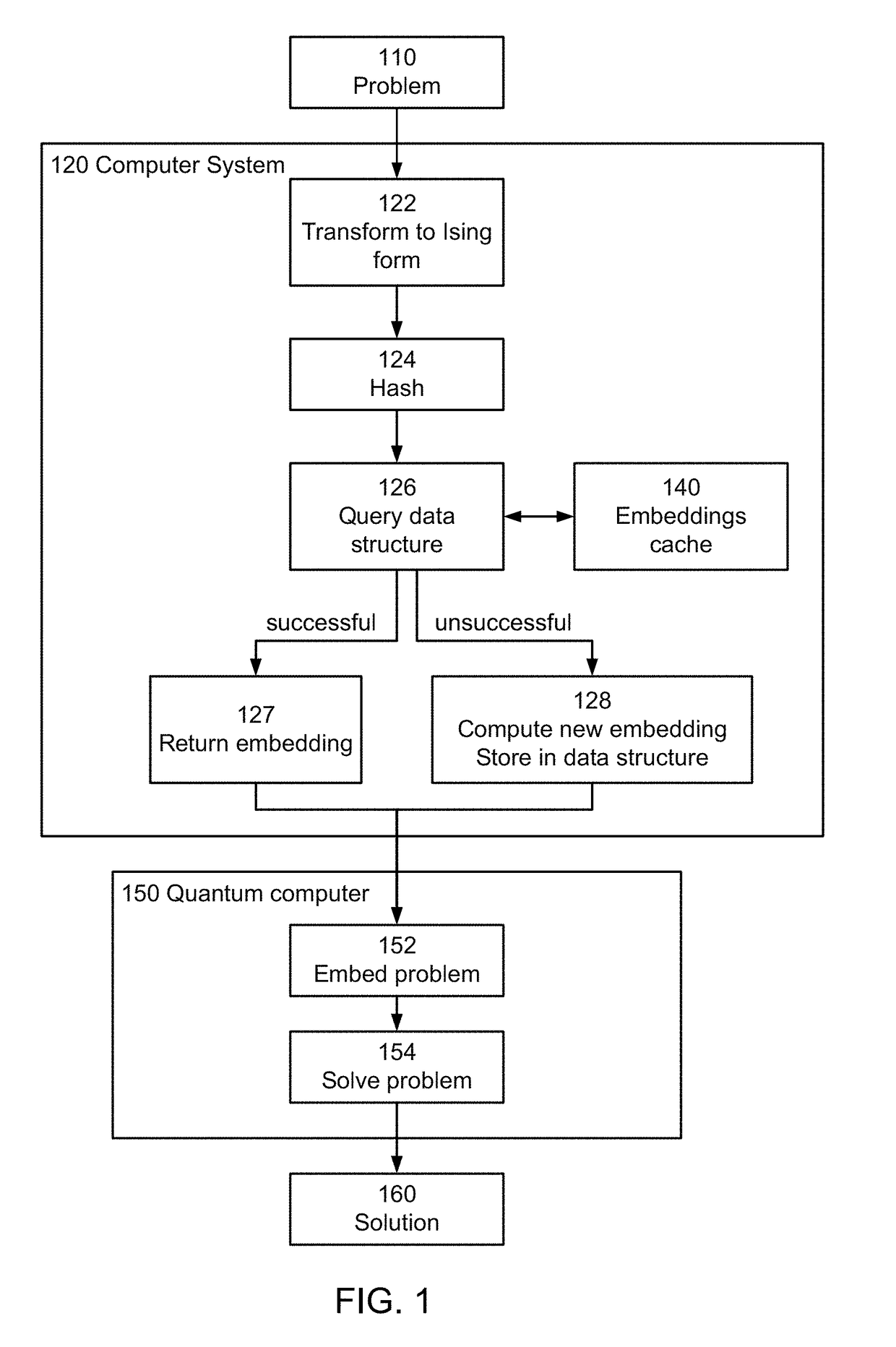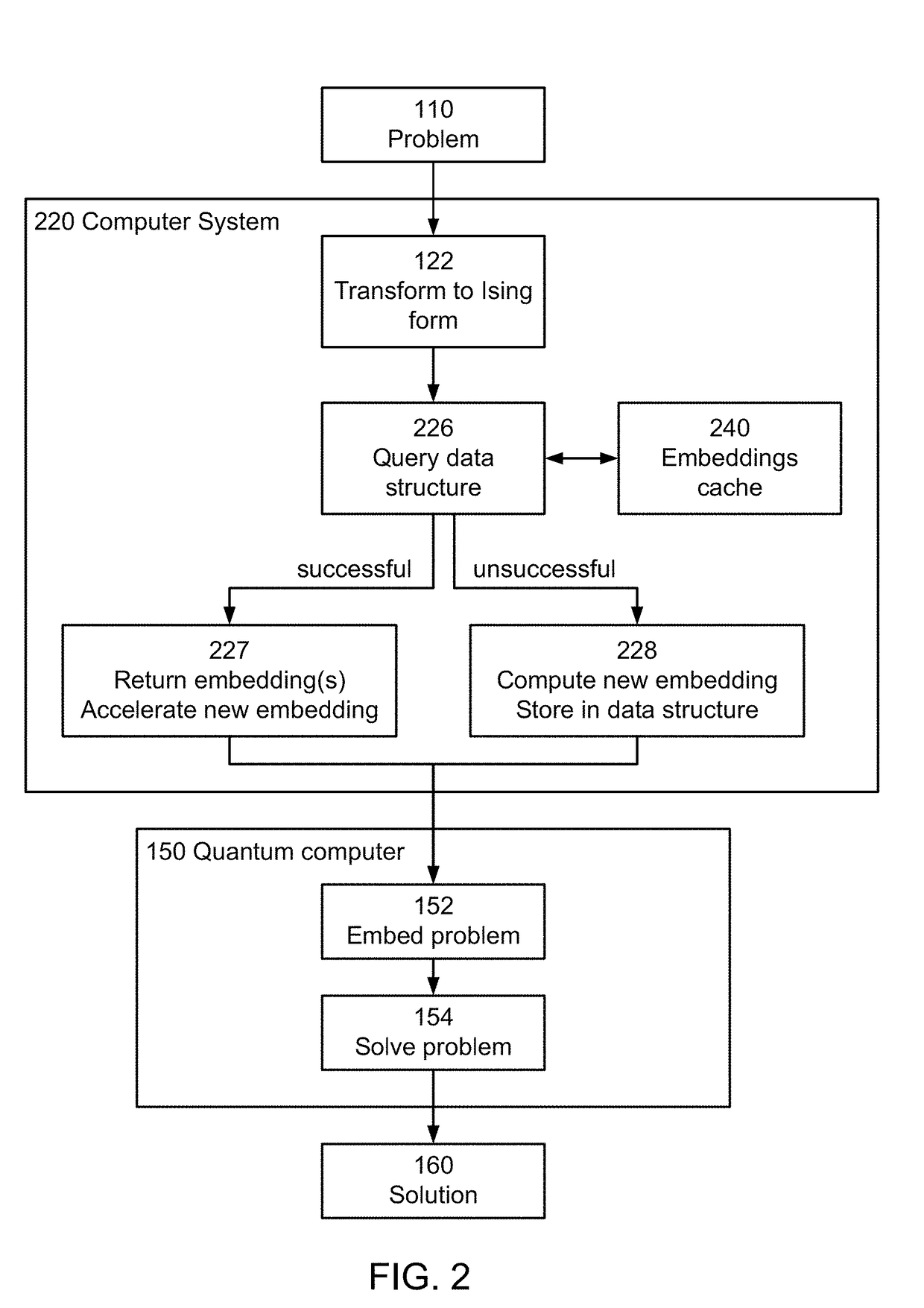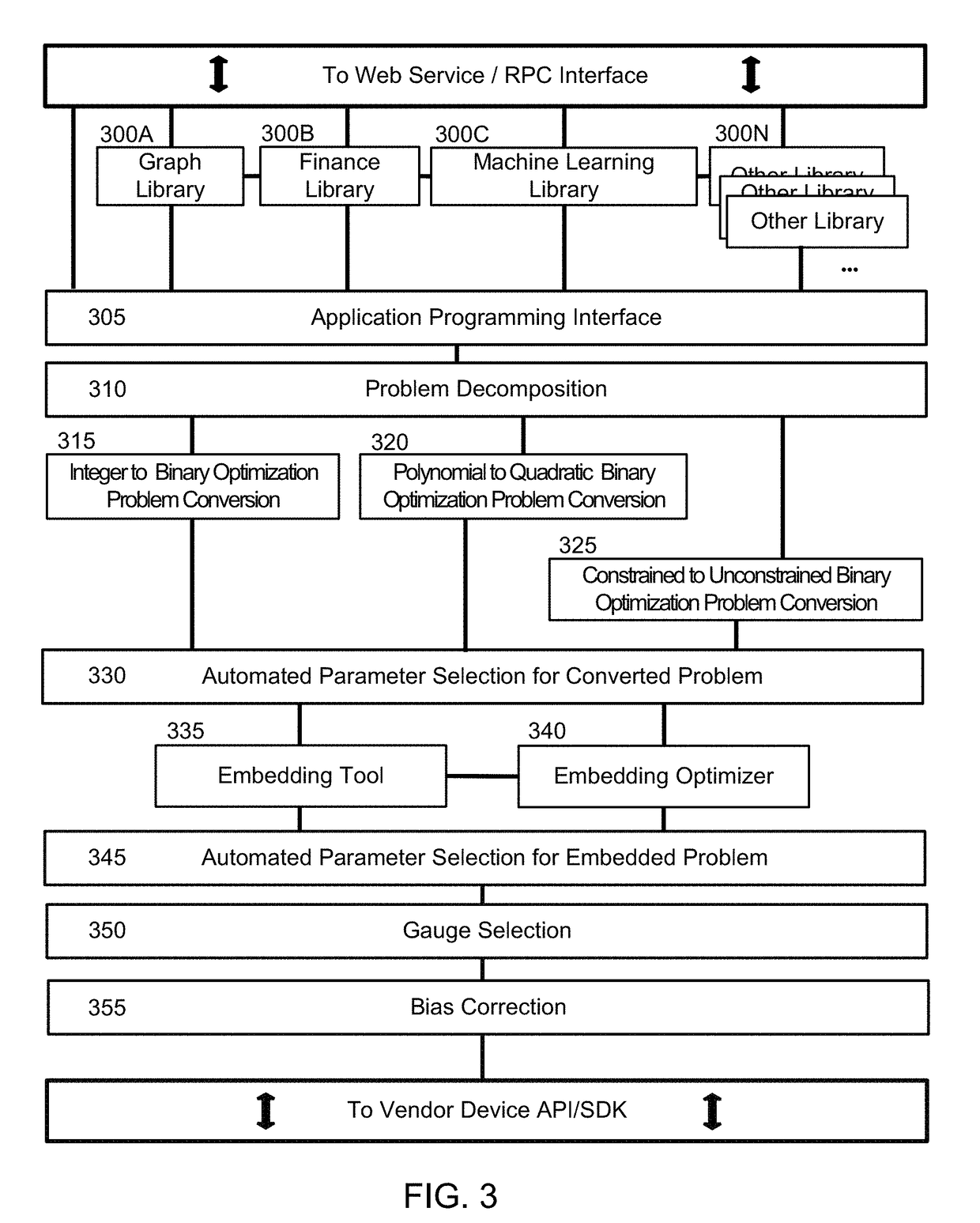Using caching techniques to improve graph embedding performance
a graph and caching technology, applied in the field of graph embedding, can solve the problems of computational difficulty in the embedding process, limit the mapping of logical variables from the problem formulation onto qubits of quantum hardware, and the problem of computational difficulty, so as to save time and computational expens
- Summary
- Abstract
- Description
- Claims
- Application Information
AI Technical Summary
Benefits of technology
Problems solved by technology
Method used
Image
Examples
Embodiment Construction
[0017]The figures and the following description relate to preferred embodiments by way of illustration only. It should be noted that from the following discussion, alternative embodiments of the structures and methods disclosed herein will be readily recognized as viable alternatives that may be employed without departing from the principles of what is claimed.
[0018]FIG. 1 is a flow chart diagram for caching embeddings for a quantum processing device based on exact matches. The problem of interest 110 is a problem that a user desires a solution for. It will be solved by a quantum processing device. The user may specify that the problem should be solved by a quantum computer, or a computer system may determine the problem is suitable for solution by a quantum computer. For convenience, the problem of interest will be referred to as the current problem 110.
[0019]The current problem 110 is loaded onto a digital computer system 120. The computer system transforms 122 the current problem...
PUM
 Login to View More
Login to View More Abstract
Description
Claims
Application Information
 Login to View More
Login to View More - R&D
- Intellectual Property
- Life Sciences
- Materials
- Tech Scout
- Unparalleled Data Quality
- Higher Quality Content
- 60% Fewer Hallucinations
Browse by: Latest US Patents, China's latest patents, Technical Efficacy Thesaurus, Application Domain, Technology Topic, Popular Technical Reports.
© 2025 PatSnap. All rights reserved.Legal|Privacy policy|Modern Slavery Act Transparency Statement|Sitemap|About US| Contact US: help@patsnap.com



